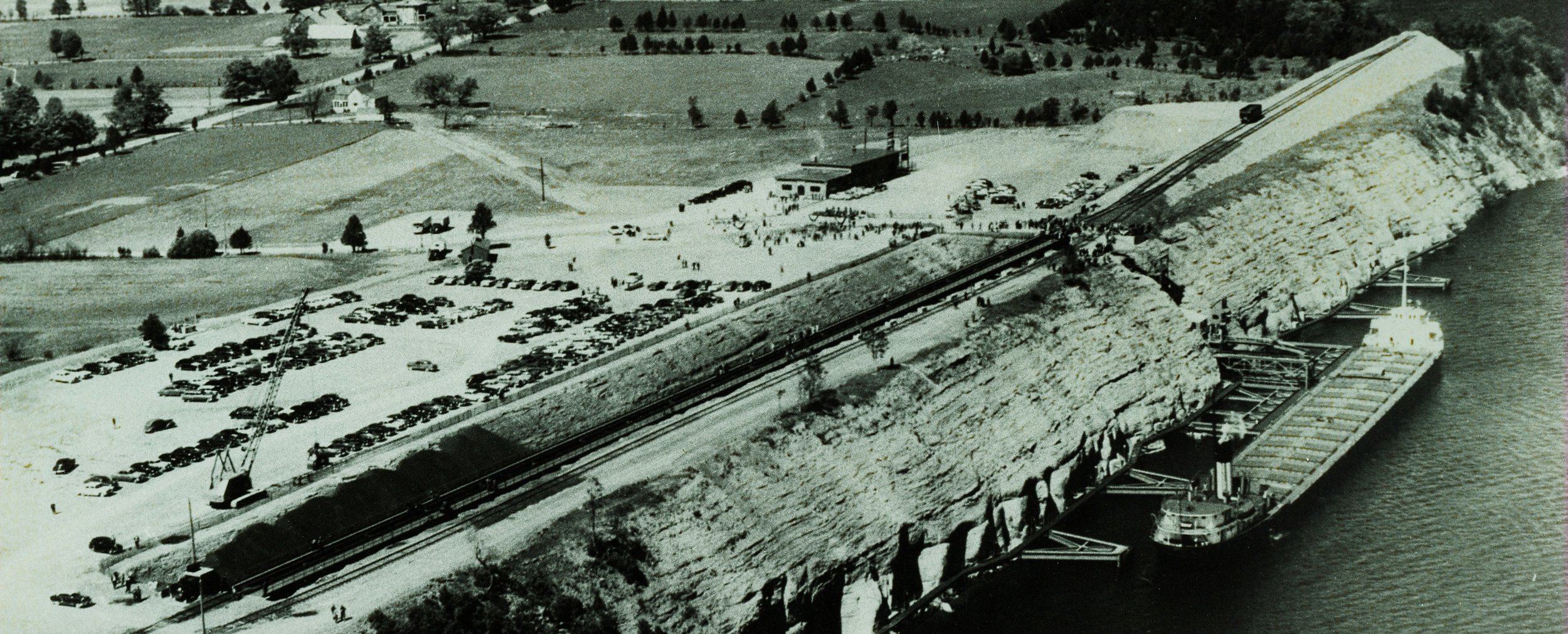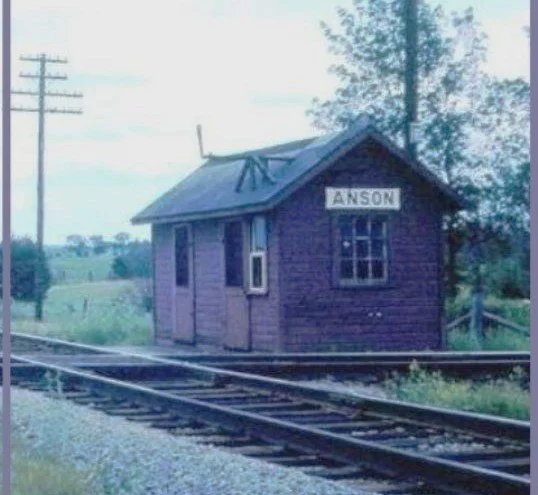THE VANSICKLE ROAD AND MUCH MORE by Charles Barrons 1996
/Ronald Barrons SENT US THIS PHOTO AND ADDS: Note, there was no hydro, but they had phones, which they'd had from in the 1920's. Hydro came in 1949. I was happy to have found this photo in my Uncle Charlie's collection in that it shows the windmill I knew the farm had, but that I never seen.
Tom Vansickle with his parents, Annie and John
Methuen Township was surveyed in 1833 by Henry Ewing (who, by the way, drowned in Lake Scugog in 1841). At that time, it was a very heavily forested township. There were no roads except bush roads which some of the lumber men used in the winter to cut logs, mostly white pine which were taken out to the rivers and lakes to be floated down to the saw mills. Both the Gilmour and Rathbun Lumber Companies worked this area. Tom Vansickle brought the last large river drive to Marmora from north of Tangamong Lake to Pearce's Mill in Marmora about 1920. Dan Ellis brought a small drive about 1921.
In the south east corner, there was some granite rock; a little farther north, there was an outcrop of lime stone covered with very heavy clay, which became very good farmland, when the timber was taken off. John Vansickle first registered land in Methuen in 1833.
According to a write-up in a local paper by Frank Sopha, who died in 1975 at the age of 90 what is now known as the Vansickle Settlement was first known as the Soph Settlement.
James Stephen Sopha and his wife were the first to settle there in a very virgin timber (Lot 6, Concession 1, Methuen Township). They were French, from Quebec, which was then called Lower Canada. They moved from Campbellford, through Belmont. They cleared the land and built a log cabin until they could clear more land and build a two story log house and a barn. They had four sons and three daughters. The nearest store was at Garrison (now known as Preniveau), about 15 miles away. The nearest medical help was at Stirling They would walk to Marmora, hire and horse and ride to Stirling The Sophas and Vansickles, perhaps the VanVolkenburghs and Coles, were in there about the same time.
The Vansickle school, one-room schoolhouse which was used for many years, was destroyed by fire in 1990 My wife, Freda (Ellis) Barrons and her brothers and sisters attended the Vansickle school, from 1930- 1936 Her teacher was Miss Lucy (Wing) Buchanan Although the school was small, at that time its enrollment was around 40 pupils.
Beside the school was a small cemetery (about 6 graves) Two infant children of John Henry and Sarah (Vesterfelt) Johnson were buried there They had their own cheese factory, the building, which is located south of the house along the road, is still standing (Jan 1996) although deteriorating. When they first moved in it was likely that they used a team on oxen on a jumper, loaded with all their worldly possessions piled on.
Some of the 3rd generation of Sophas worked in lumber woods (Jim Sopha and his brothers). The men would sometimes be gone for several weeks at a tie. Their wives would be left at home to raise the family and care for the livestock. Jim Sopha, who was working one winter in the bush, had his team of horses killed when a tree fell on them. He was paid about $1.25 a day for man and team. This included board and feed for the horses. He paid $500.00 for a team to replace them. Jim Sopha and his wife buried two young children on their property on the south-east corner of Lot 7, Concession 1, Methuen Township.
Some of the Sophas went to Cobalt around 1900 to mine silver. Cobalt was a new mining town. Several men from that area went north as they had worked in the mines at Cordova and were experienced miners. Elmer Sopha, a nephew of Charles Sopha, was a lawyer and became a Member of Parliament for the area (Nickle Belt). Charlie stayed at home and married a school teacher, Sophrona Hurley. They raised a family, finally leaving the farm and moving to Marmora for a few years. They are buried there. One son, Clarence, took over the farm and lived there with his wife, Keitha, and son, Darrell. Darrell was the sixth generation to live on the farm. The land grant from the Province was for 400 acres.
The nearest post office to Vansickle was at Warriston, now known as Cordova Mines.
There was a saw mill on the Deer River, between Deer (Cordova) and Mudturtle Lakes. This is perhaps where the lumber was sawn for all the buildings in Vansickle. The river was dammed up to provide water power for the saw mill. The site of the dam is still called the Johnston place (1996). The mill was owned over a period of time by a Mr. Downs, a Mr. Johnston, and a Mr. Airhart. There is a bay on the east side of Mudturtle Lake called Airhart's Bay. I recall being told by Jim Minihan that he bought hemlock lumber from the mill for $2.00 per 1000 board feet. The saw mill was moved nearer to the stave mill owned by Mr. Cole and Mr. Laby. Staves were used to make barrels. The stave mill employed about 20 men. The staves were sawed, shaped, steamed and bent, then drawn by horses to Cordova to be loaded on rail cars.



































